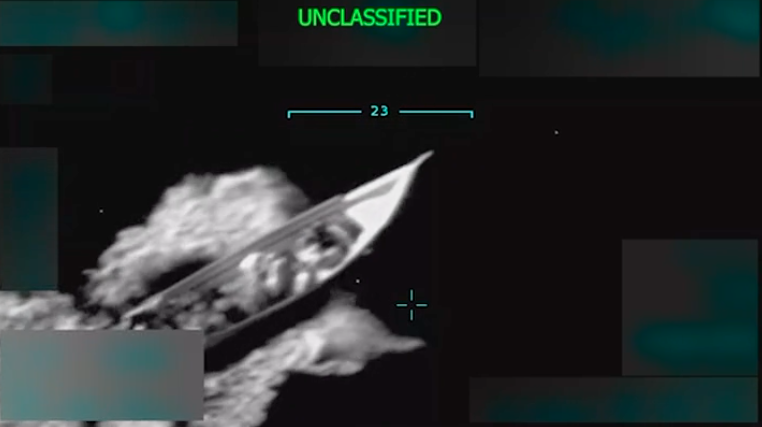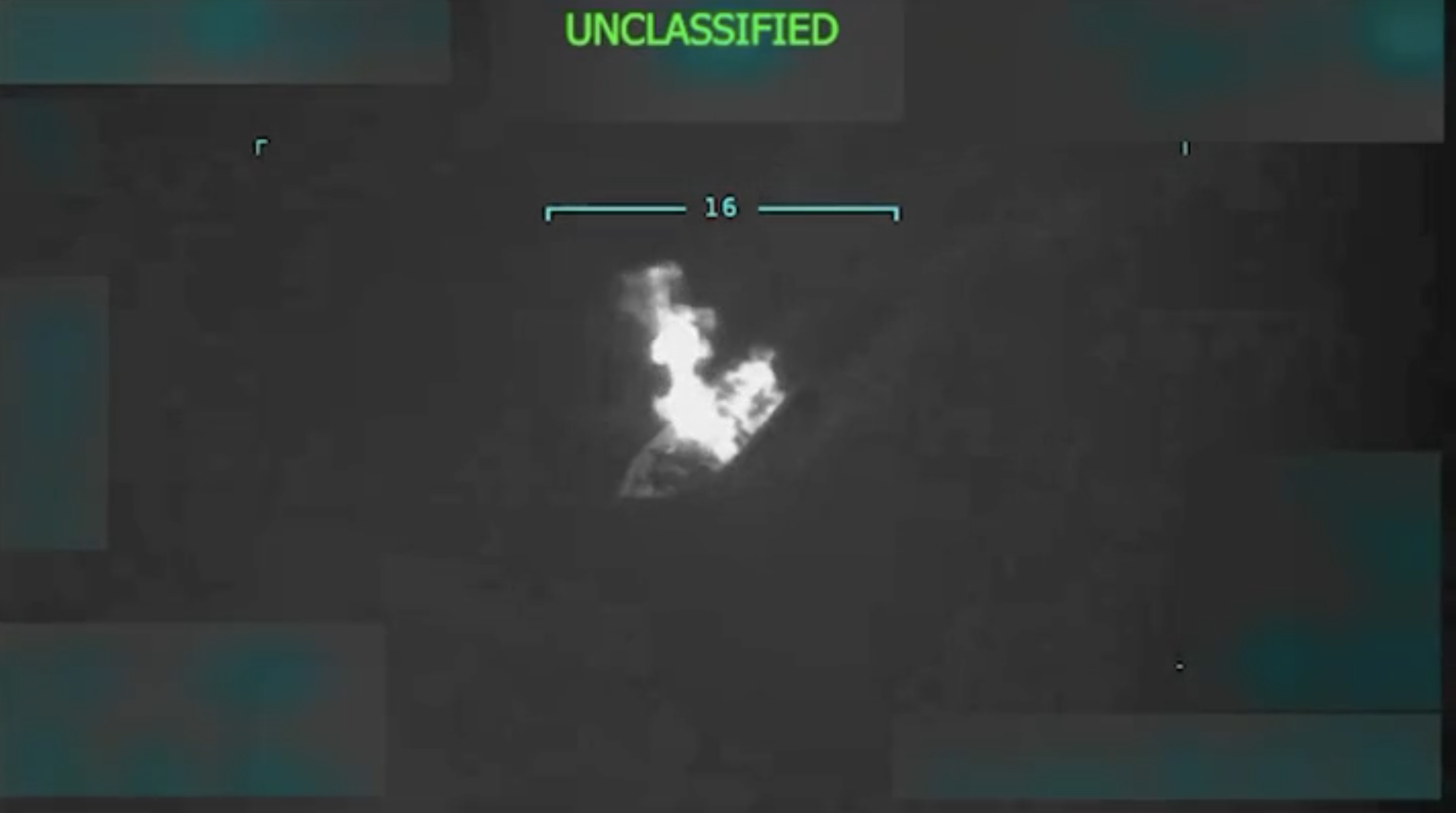Trucker’s Hitch: Targeting ISIL Oil Transport Trucks and the Need for Advanced Warnings
In this comment, I would like to offer some thoughts in response to Butch Bracknell’s recent post on the targeting of ISIL oil transport trucks by the US in eastern Syria.
Published by The Lawfare Institute
in Cooperation With

In this comment, I would like to offer some thoughts in response to Butch Bracknell’s recent post on the targeting of ISIL oil transport trucks by the US in eastern Syria. As has been reported in the New York Times, the aircraft carrying out these strikes have issued advance warnings to persuade the drivers to abandon their vehicles before the attacks commenced. Bracknell accepts that a number of policy reasons militate in favour of issuing advance warnings in the present case. However, he suggests that such warnings were not in fact required by the law of armed conflict.
It is useful to revisit this assessment, partly because the legal and policy consideration seem to be more closely aligned than Bracknell’s conclusion suggests and partly because the case brings to light some interesting aspects of legal inter-operability.
Targeting the trucks
The air strikes raise two principal questions under the law of armed conflict. The first of these is whether the oil trucks concerned constituted lawful military objectives. Bracknell argues that they did:
It is not relevant whether the trucks are travelling to a port to offload cargo for revenue-producing export or whether they are bound for the “front lines” to directly contribute to ISIL military operations. So long as U.S. and allied forces can demonstrate “military necessity” to destroy the tankers, they constitute legitimate military targets.
As far as objects are concerned, the established definition of military objectives covers objects “which by their nature, location, purpose or use make an effective contribution to military action and whose total or partial destruction, capture or neutralization, in the circumstances ruling at the time, offers a definite military advantage.” While the DoD Law of War Manual is right to point out that this definition “may be viewed as a way of evaluating whether military necessity exists to attack an object” (para 5.7.3), it does not follow that the classification of an object as a military objective can be reduced to an exercise in demonstrating military necessity. The law requires a more nuanced weighing of the relevant factors.
If the trucks and their cargo were destined for the front lines, or were intended for military use, there can be little doubt that they would have satisfied the definition of a military objective. However, if they were merely travelling to a port to offload their cargo for revenue-generating export, their characterisation as a military objective becomes more contentious. The US takes the position that not only war-fighting, but also war-sustaining, capabilities come within the definition of a military objective (DoD Manual, para 5.7.6.2). This would conceivably cover oil production and transport facilities, including the trucks in the present case. However, this broad definition of military objectives is not universally supported either in the literature (see, e.g. Dinstein, The Conduct of Hostilities under the Law of International Armed Conflict, 2010, paras 233–234) or by the more conservative approach adopted by other States (see, e.g. UK Manual of the Law of Armed Conflict, para 5.4).
Targeting the drivers
The second question raised by the air strikes concerns the legal status of the truck drivers. Bracknell suggests that they might qualify as “lawful combatants.” In this respect, it is important to bear in mind that ISIL is a non-State actor and that the armed conflict in existence between it and the US is a non-international armed conflict. ISIL forces therefore do not constitute the armed forces of a State, but are an organised armed group within the meaning of Article 1(1) of Additional Protocol II. This is an important point. While ISIL fighters may be described as combatants in a functional sense (see Article 3 of the 1907 Hague Regulations), they most definitely are not combatants within the sense of Article 43(2) of Additional Protocol I, which is to say individuals who “have the right to participate directly in hostilities.” Members of ISIL are not lawful combatants. Accordingly, they may not be targeted as such.
This leaves two options for conducting direct attacks against the truck drivers. First, such attacks would be lawful under the law of armed conflict if the drivers were members of an organised armed group belonging to ISIL. In that case, they could be targeted on the basis of their membership in that group alone. Two difficulties arise here. The first is that the legal criteria of membership in organised armed groups remain unsettled. As is well-known, the ICRC in its Interpretative Guidance on the Notion of Direct Participation in Hostilities has suggested that membership must be assessed with reference to the concept of “continuous combat function.” This has been criticised as too restrictive, in particular because it creates an asymmetry between members of State armed forces, who are lawful combatants irrespective of their function in the military (save medical and religious personnel), and members of organised armed groups, who are targetable only if they actually carry out a combat function.
The US adopts a broader definition of membership in organised armed groups, including engaging in combat support or combat service support activities on behalf of the group (DoD Law of War Manual, para 5.8.3). In this context, it is useful to recall that the ICRC’s Interpretative Guidance is only that: it is guidance, not the law. However, in the light of limited and equivocal State practice, it is difficult to determine where the law regarding membership in organised armed groups currently stands. The second difficulty is a practical one and arguably of greater significance in the present context. Given the nature and large number of the targets prosecuted, it seems unlikely that those planning the attacks could have obtained positive identification, to a degree of reasonable certainty, that all of the individuals associated with the trucks were members of an organised armed group belonging to ISIL (unless driving a truck itself was treated as sufficient proof). If such positive identification was unachievable, the planners could not assume that all individuals associated with the trucks were legitimate military objectives.
Second, direct attacks against the truck drivers would have been lawful if they were civilians directly participating in hostilities. Such civilians do not enjoy immunity from attack for such time as they take a direct part in hostilities (see Article 13(3) of Additional Protocol II for non-international armed conflicts). According to Bracknell, the truck drivers satisfied the tri-partite test of threshold of harm, direct causation and belligerent nexus established in the ICRC’s Interpretative Guidance as the constitute elements of direct participation in hostilities. This is certainly correct if the truckers were driving their fuel directly to the front line (see Interpretative Guidance p. 56). However, the Guidance actually suggests that the drivers would not have lost their protection from direct attack if they were ferrying fuel destined for military use somewhere to the rear of military action. This aspect of the Guidance remains controversial. Here too, the US adopt a more robust approach (DoD Manual, para 5.9.3). However, the DoD Manual also lists the following as examples of acts not constituting direct participation in hostilities (para 5.9.3.2):
- general contributions made by citizens to their State’s war effort (e.g., buying war bonds or paying taxes to the government that will ultimately be used to fund the armed forces); …
- working in a munitions factory or other factory that is not in geographic or temporal proximity to military operations but that is supplying weapons, materiel, and other goods useful to the armed forces of a State;
Based on this, it is reasonable to conclude that civilians driving vehicles carrying oil not destined for military use, but for generating revenue sustaining the overall military effort, do not directly participate in hostilities within the meaning of the DoD Manual.
So what?
To be clear, I am not suggesting that the oil trucks could not constitute military objectives; nor am I suggesting that the drivers could not be subject to direct attack either on account of their status as members of an organised armed group or because they were directly participating in hostilities. It all depends on the facts.
What I am suggesting is this. First, the law is more nuanced and the assessment of the battlefield status of the targets requires greater care. Second, if for practical reasons it was not possible to positively identify the status of all of the individuals associated with the trucks to a degree of reasonable certainty, it follows that any individuals not so identified had to be presumed to be civilians enjoying immunity from attack. As such, it would have been necessary to avoid, or in any event minimise, incidental harm to these individuals. Consequently, issuing advance warnings would have made sense not solely from a policy perspective, but it would have also responded to the requirements of the law of armed conflict.




